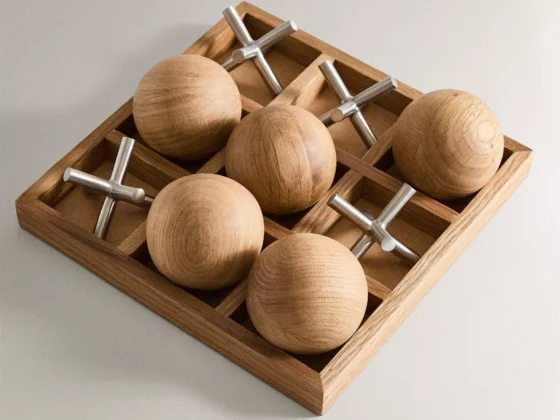“At Carbondale, we try to be leaders. We don’t follow styles; we create them. What I find fascinating about design is the opportunity to create something new for each project. This is why we are specialists in ‘Luxury Architecture;’ because we can customise each of our works.” These are the words of Eric Carlson, elaborating on his concept of ‘Luxury Architecture,’ and about his Paris based Architectural firm Carbondale. Formerly, Carlson was the founder and Director of the Louis Vuitton Architecture Department in Paris for seven years.
“When I say we’re specialists in ‘Luxury Architecture,’ I mean we create custom designs that are unique for each client. We invent new elements and materials intrinsically based on the identity of the Client or Brand. It gives them an ownership that can only be theirs… a kind of ‘architectural copyright’ generated from the symbiosis of Architect and Client. We have many examples of this in our work.” – Eric Carlson, Carbondale founder.
The many examples of Carbondale’s “Luxury Architecture” are impressive indeed. Louis Vuitton, Longchamp, Dolce & Gabbana, Escada, TAG Heuer, Paspaley Pearls, BMW, and Tiffany & Co are some of the luxury brands that Carbondale has worked with; designing for them corporate headquarters, retail spaces, restaurants, brand-museums, penthouse apartments, bespoke mansions, and even plazas.
Carbondale’s projects are found around the globe, from Paris to London, New York, Milan, Munich, Venice, Monaco, Sao Paulo, Tokyo, Seoul, Sydney, Melbourne, Hong Kong, Las Vegas and Switzerland. “Clients who are seeking ‘the exceptional’ are rare and come to us from all over the globe. Our work is inherently international,” explains Carlson. “For me personally, it’s the differences that excite me the most and fundamentally inspire the designs.”
The “differences“, according to Carlson, are not just between brands, but also increasingly, within brands. “The brand strategy of creating the same architecture everywhere in the world for luxury brands has changed drastically. The need to recognise and be comforted by sameness has been replaced by the desire to find oases of distinctiveness within an increasingly industrialised society. Customers from New York visiting a luxury brand store in Tokyo do not want to see the same store as they have in New York.”
The new Venetian Dolce & Gabbana flagship store situated within the historical Palazzo Torres building is Carbondale’s latest high-profile project and aptly exemplifies Carlson’s approach to ‘Luxury Architecture.‘ “When designing a store in Venice,” says Carlson, “it is essential to understand that Venice is not a shopping destination like Paris or Milan, Venice is a cultural destination.” This implies that there must be a commitment to the Venetian artistic heritage & craftsmanship; which in turn means that the Dolce & Gabbana store should first and foremost be a “culture destination,” and should be the genesis of the architectural design direction. This approach was supported by Save Venice and Venetian Heritage associations. The fact that Carbondale has had previous experience working within the creative confines of historic buildings in London, Paris and New York came in handy.
The 800 square meter, two-level flagship store built in 1880 was a former bank, along Via XXII Marzo. It was designed by the Venetian Architect and Sculptor Giuseppe Torres in the neo-Venetian renaissance style. For a brand defined by contrasts, the store’s exterior and interior design explores and accentuates the contrasts between the “historical” and the “contemporary” with a spatial design inspired by the Italian palazzo model with their distinctive rooms, each with characteristically different colours and finishes.
Visitors are greeted on arrival by the free-standing symmetrical stone façade meticulously restored and displaying the brand’s accessories for men and women. This space is lavishly detailed with intricately carved dark wood walls and ceilings and elaborately patterned inlay mosaic stone floor. The contemporary furniture is delicately designed to disappear or to reflect and accentuate the historical envelope.
The journey then leads to a linear architectural “atrium-canal,” flooded with natural light and a spectacular 20-meter long by 4.5-meter high wall of 24-karat gold glass mosaic tiles that were handmade locally in Venice by traditional mosaic craftsmen Orsoni and Friul. The mosaic wall supports 45 floating brass shelves displaying the latest bags and accessories.
The large women’s ready-to-wear room is red, lined with Rosso Levanto marble and stone mosaic tiles while the men’s ready-to-wear is green with Verde Menta marble and mosaics. The high-jewellery space is blue, lined with dark blue glass mosaic walls punctuated with glimmering gold glass mosaic stars inspired by the 10th-century arched portico of the Basilica at Piazza San Marco. The stair tower space is green, lined in Verde Antigua marble and leads visitors up to a 20-meter long wall mirror which visually and magically doubles the size of each room.
The men’s formal-wear rooms are blue and green. They are wrapped in blue silk Damasks made by the historic Venetian Bevilaqcua weavers, and Irish Green and Italian Blue Boquira marbles. The women’s evening-wear room is gold, defined with wood inlaid flooring, brilliant gold Damask and Giallo Siena Marble. The spatial experience crescendos in three exceptional rooms from the 1800’s meticulously restored and finely inhabited with exquisitely designed furniture to accommodate the Dolce & Gabbana’s men’s Sartoria and women’s Serra creations.
Given the use of extravagant materials in Venice, one may be forgiven for assuming that they are an essential part of Carlson’s concept of luxury.
“It is a common misconception that materials make the project luxurious. In fact, it is the quality of the ideas, of the strategy and the quality of the fabrication of those ideas that determine a luxurious result. To achieve this level requires resources for the thinking, and for the making of the architecture.” – Eric Carlson, Carbondale founder.
The “fabrication” of Luxury for Carlson also extends to using the latest digital technology on offer. “Because Luxury Architecture offers opportunities for exploration, it will likely be at the forefront of how this new technology or new material will be manifested. However, like any material, it’s important to understand that ‘the digital’ is not a solution, but it is only a tool that when combined with ideas can improve practical aspects of our lives but also the way we experience our environment. For our projects, we collaborate with digital specialists who master the technical hardware and software aspects to conceive new ideas. Our BMW Avenue George V Paris Showroom-Museum is an excellent example of how this new type of collaboration can produce innovative digital based ideas.”
Closer to home, Carbondale is currently working on a project that also exemplifies Carlson’s concept of luxury but on a much bigger scale. The Plaza Building on Breakwater Island, Abu Dhabi, is a 75,000 square metre black mirrored block of offices, luxury residences and commercial space located along the corniche. Architecturally sculpted to echo the desert dunes, this contemporary building is crowned by a metallic canopy constructed of arabesque geometric patterns. The high-tech canopy is designed to filter the desert sun and supply cooling water vapour establishing a sublime vegetal Urban Oasis. The crowning features include a swimming pool, hammam and restaurant structures conceived as luxurious architectural jewels that glimmer in the desert sun.




































